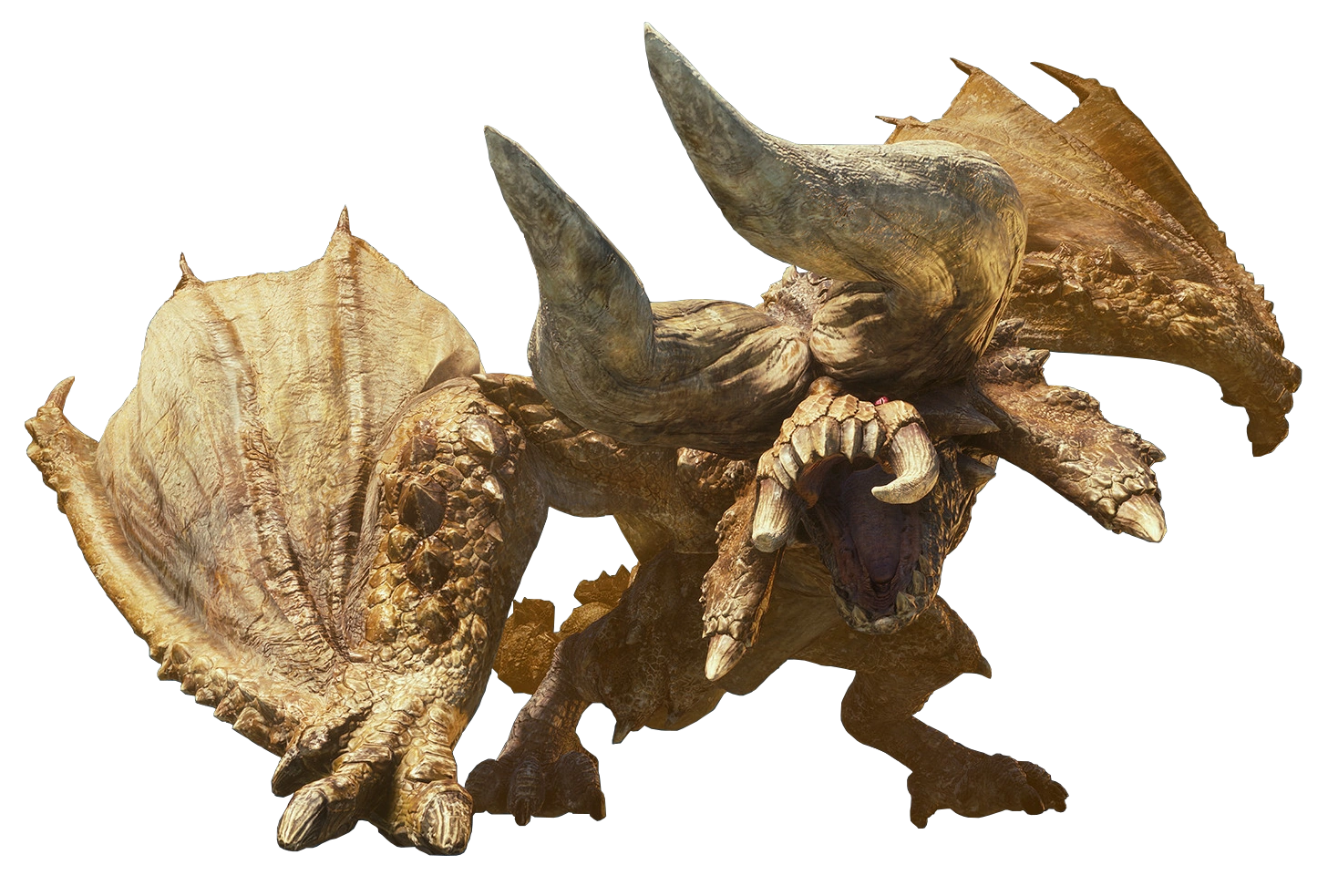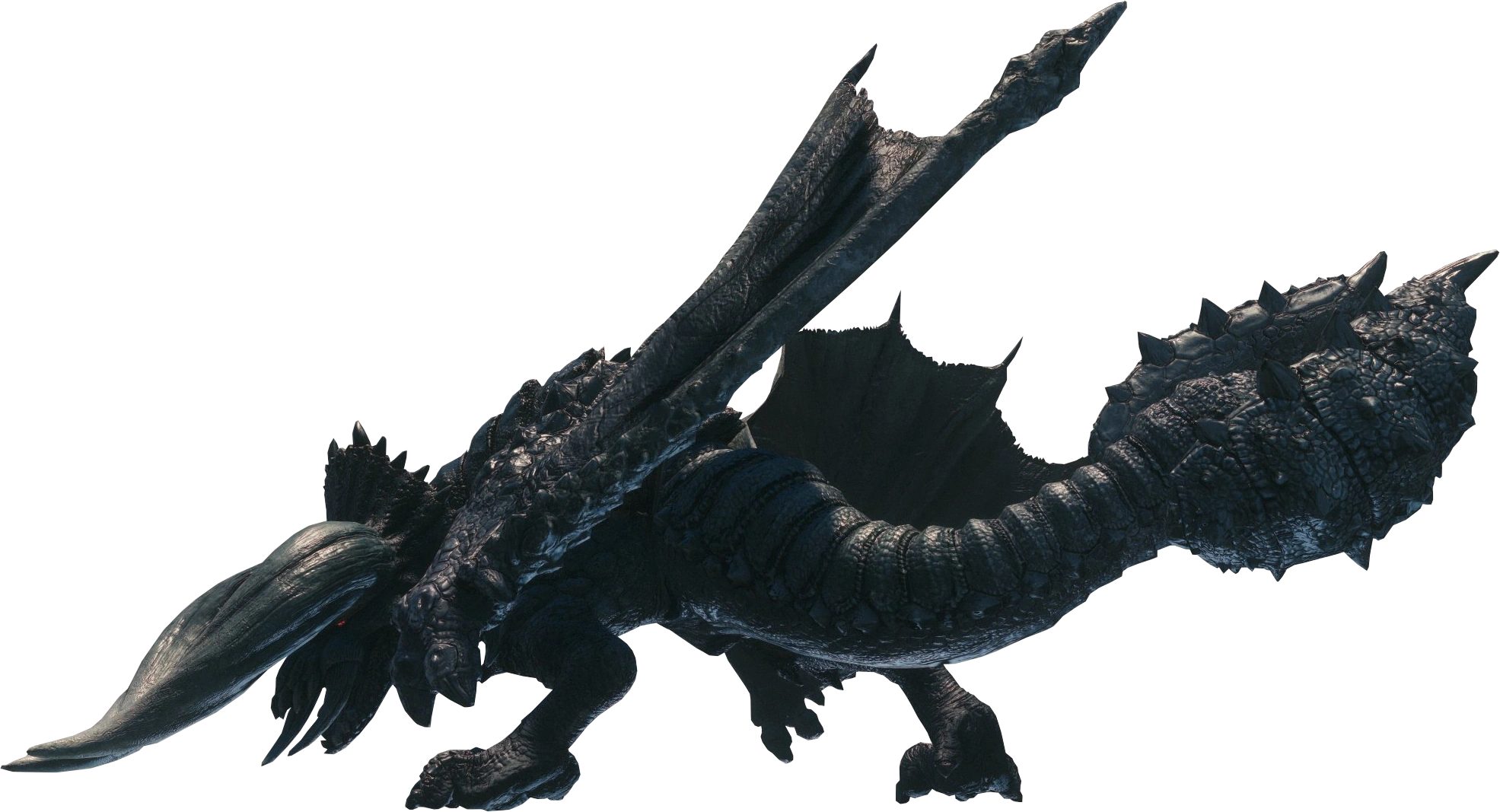Feared as desert tyrants, Diablos are extremely territorial and aggressive towards other monsters in their habitats, even herbivores, since cacti are limited in the desert. When provoked, they will release an ear-splitting screech of a roar. They will even huff black smoke if truly enraged. Genprey packs and their Gendrome alphas, as well as Cephalos packs and Cephadrome leaders often fall victim to the Diablos' vicious rampages. Even the ferocious Tigrex give them a wide berth, and they have been observed lifting and throwing the large Brute Wyvern Glavenus using their immensely strong neck muscles during their turf wars. Diablos will commonly charge at their opponents with their powerful legs or tunnel underground before emerging to strike their prey from below. Alternatively, they may use their tail clubs to deal devastating blows. Despite their tremendous strength, they are outclassed by the nomadic Deviljho, which have been witnessed lifting and slamming Diablos onto the ground. While these are not usually predator-prey encounters, as Diablos are still not easy foes to bring down, they will still occasionally fall prey to Deviljho that are hungry and desperate enough. [Juvenile Diablos in particular can still potentially be preyed on a variety of desert predators, though this is where their burrowing abilities may come in handy.]
As Diablos frequently travel underground, they have an excellent sense of hearing but poor eyesight. This has the side effect of making them highly sensitive to loud sounds like sonic bombs and monster roars, which can surprise them and force them to surface. This usually causes them to be disoriented and trapped in the sand temporarily, but eventually they will recover and use their wings to take flight in order to free themselves. In the Wildspire Waste, Diablos spend most of their time in the large underground caves, only venturing outside to feed due to their hatred of loud sounds.
Most of the time, Diablos are solitary creatures that do not tolerate each other's presence, and will readily lock horns other over territory and food. However, male and female Diablos will pair up for a short period of time during the mating season. It is during these times that male Diablos will fight each other for mating rights. After mating, female Diablos will undergo an even more drastic change from the hormones and eggs in their body, gaining an intense black tinge and becoming the Subspecies known as Black Diablos. While technically not a true Subspecies, they are classified as such due to their increased strength, heightened aggression, intense savagery, thicker hide and providing different materials from regular Diablos. Females are already larger than males, so this only makes them even more terrifying. Besides acting as a warning to other monsters, some researchers speculate that the black color helps them raise their body temperature using the sun and shows other males that they are already taken. Although they will share their territory with their mate for a short time after mating, they cooperate and prefer to wander alone, even fighting each other when encountering each other. Due to this behavior, it is believed that Diablos or either sex do not care for their young at all after her eggs are laid. However, it is worth remarking that Black Diablos tend to feed on different kinds of cacti from regular Diablos for her developing unborn young. Black Diablos also prefers to stick to her territory more, for example in the Wildspire Waste they tend to stay in the underground caves and venture to the surface less often. If a Black Diablos lives long enough after many battles and absorbs enough bioenergy to become a Tempered Monster, her strength and abilities become comparable to an Elder Dragon.
The closest relatives of Diablos are the rare Monoblos, which lead a similar lifestyle.
In heat or pregnant/gravid?
In all of the English in-game descriptions, Black Diablos is described as being in heat. In the official Dive To Monster Hunter World book however, it is stated that they are pregnant(gravid) and gain their coloration after mating to tell other males that they are already taken among other reasons. The Japanese in-game descriptions are less specific and only say that they are in the breeding season (which can include both the intervals when they are in heat as well as when they are gravid). I assume that the translators made an error in the translation for the English description.

